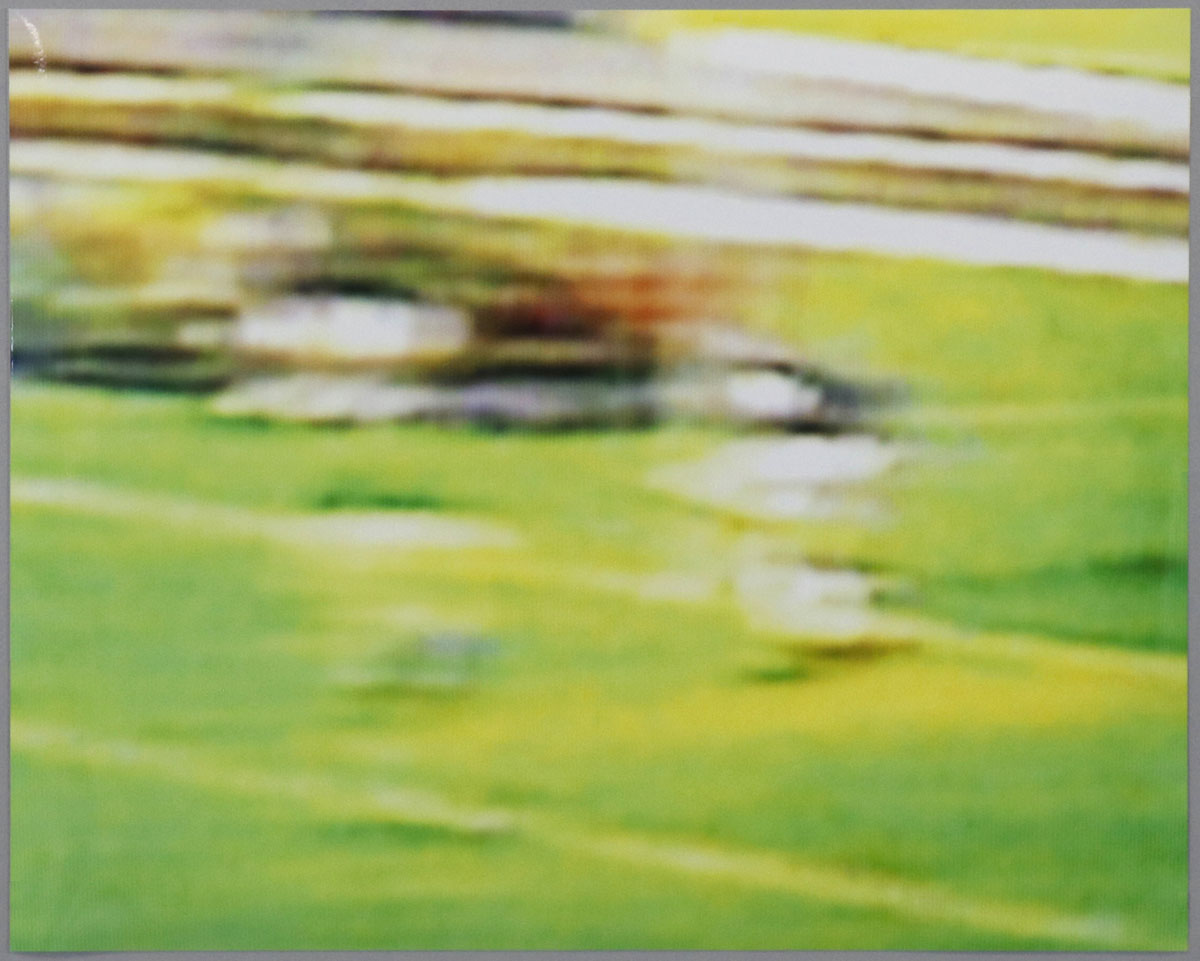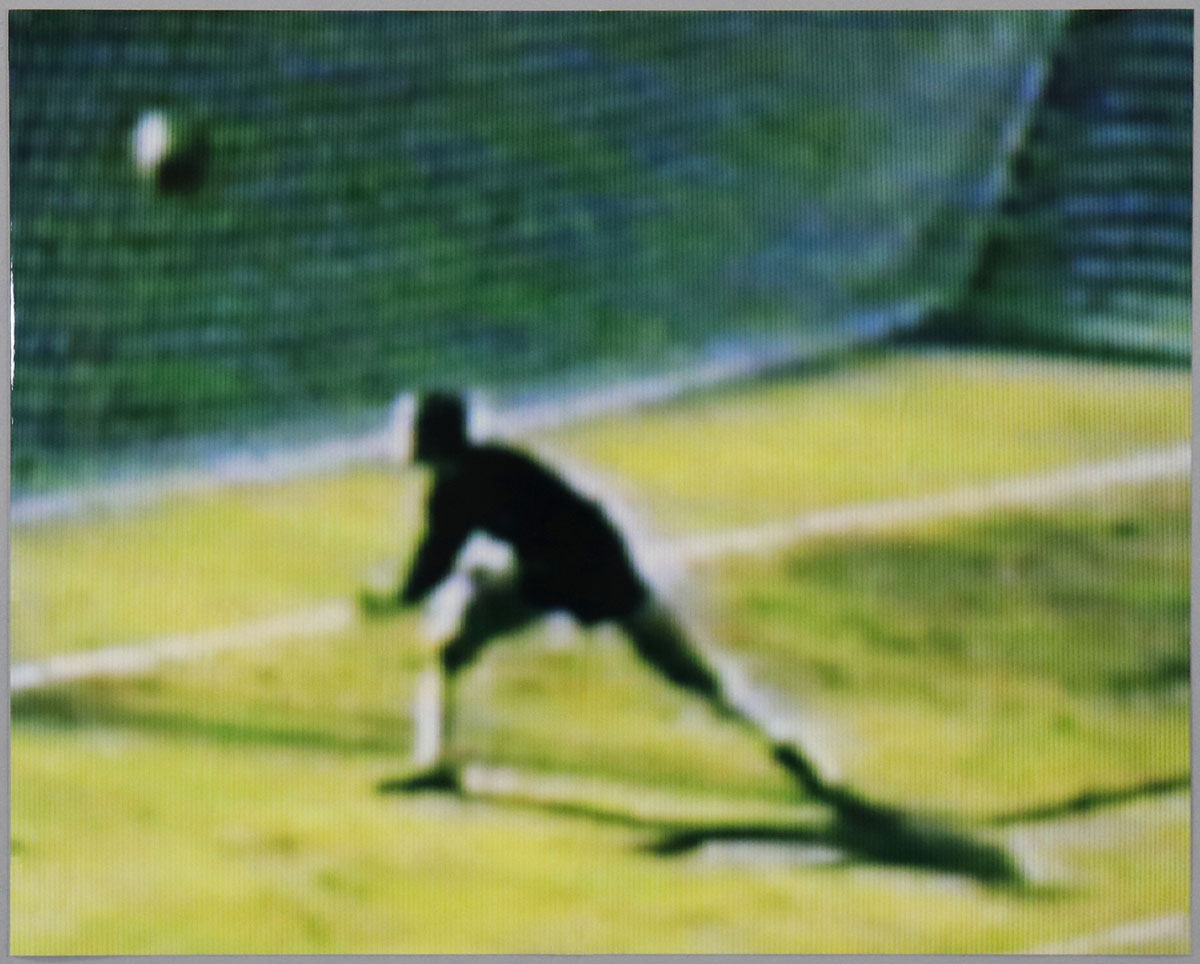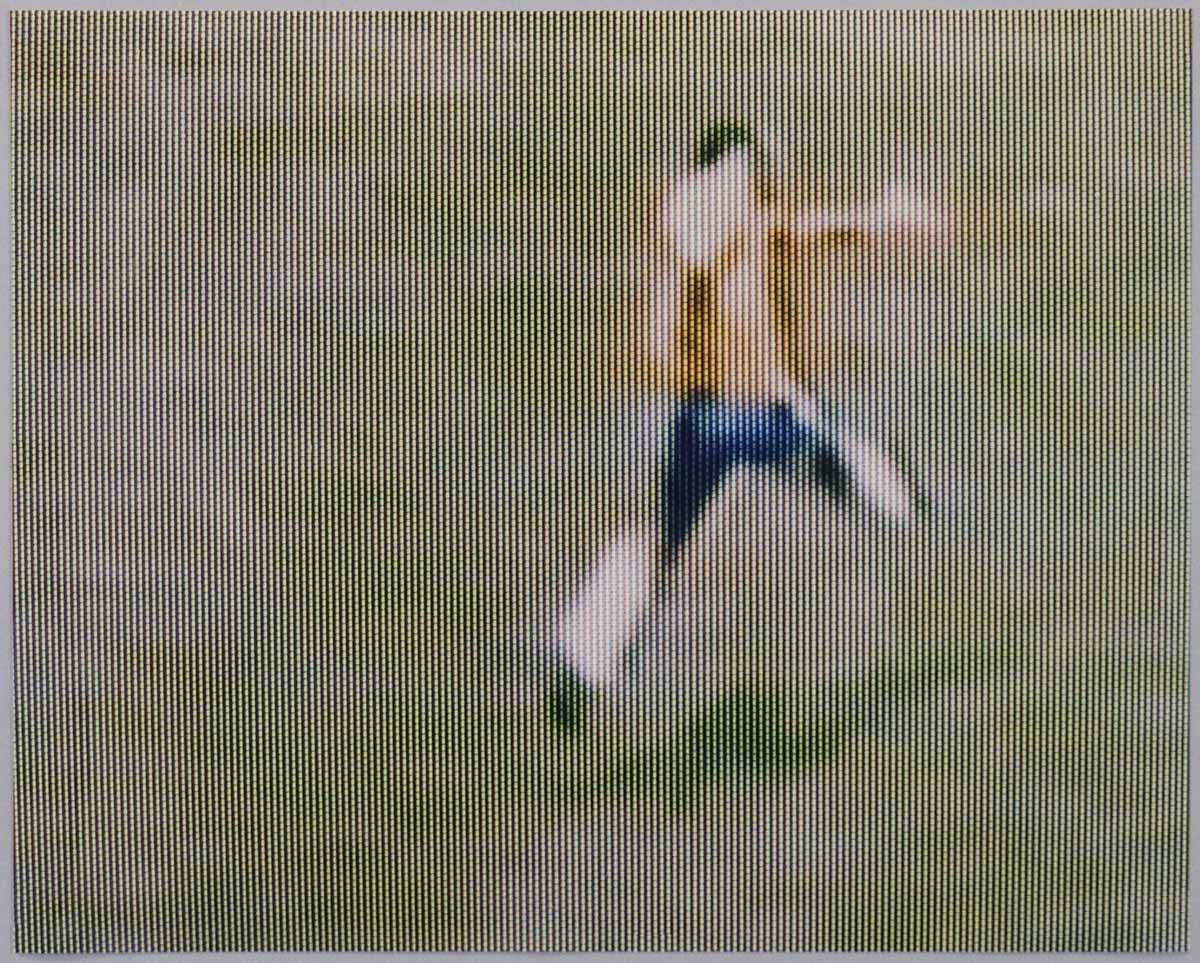Six minutes into the second half of the World Cup quarter final between England and Argentina in 1986, Maradona scored the opening goal of the match. What should have been a relatively simple back-pass of the ball by midfielder Steve Hodge, intended for the England goalkeeper, was intercepted in the air by a 5”5’ Argentinian forward, and none other Diego Maradona. But something was not right and not only did the Maradona’s last touch, before the ball hit the net, look suspicious, it surely was. That short moment in time and this particular goal inserted the World Cup of 1986 into the ‘Hall of Fame’ amongst final tournaments. Maradona himself - a devout Roman Catholic - could only explain the last touch as divine intervention, or ‘the hand of God’. To countless football fans around the world the goal is forever engraved in the memory.
Davies’ fascination with the power of the short vivid moment goes back to the early nineties when he studied for his MA in photography at Royal College of Art in London. Unlike a photograph, which records a snapshot of time in all its minute details and colour, the human vision constantly feed new sensory input to the brain which doesn’t have the luxury - or the evolutionary necessity - to archive entire lives, neatly catalogued in subjects and attaching accurate hashtags for later intellectual referral. Instead the brain stores as much as possible, leaving out most details, seemingly unorganised and grouped into exceptionally fast top-level categories associated to “danger”, “need to know” and “nice to know”; a wealth of rough data which can be triggered by an image, a sound or smell.

ROBERT DAVIES
Banks Save From Pele (Epiphany), 2001
Edition of 250
50(w) x 40(h) cm
20.00(w) x 15.98(h) inches

ROBERT DAVIES
Banks Save From Pele (Epiphany), 2001
Edition of 250
50(w) x 40(h) cm
20.00(w) x 15.98(h) inches
|
|
|
50(w) x 40(h) cm
20.00(w) x 15.98(h) inches
|
Chromogenic print on Fuji Crystal archive paper.
Signed and numbered on verso.
Only 100 printed of the edition of 250.
Edition of 250
|
|
In Davies’ practice the still image acts as a capsule of some sort where time is confined, only to reignite timeless memories. From the series ‘Body’, part of his earliest works from 1994, the artist simply shows two incredibly detailed photographs of a closed eye; one of a young woman with perfect smooth skin, and one from an older women with delicate paper-thin skin folding gracefully around her eyelid. No introduction to these recognisable images are required; where younger viewers may see their grandmother, some people with decades of life experience may think of their beloved spouse.
Later series by Davies show clouds formations; stars on the night-sky captured in movement by his camera set with a long exposure; and a video shot from the front of a commuter train destined for Aberystwyth, his hometown in Wales. All are works where each viewer will have unique and personal references, showing the world in a way it cannot be reproduced by the memory itself due to the inevitable passing of time.
“Our eyes are brilliantly adaptable. They process information in a way that a camera cannot, incessantly streaming data and reorganizing what is in front of us. Never able to separate us from our experience of the present, they view the world, but they cannot record it. Our eyes cannot abstract time.”
Robert Davies
At the height of the EUFA Euro cup in England during the summer of 1996 Davies started on a series which would exemplify his practice. Recognising that most matches can be condensed into a few short and important moments - the ones that people talk about the next day and for years to come - he scrutinised and uncovered decisive moments from the history of World Cups. The images produced by Davies are a long way from the crisp stills that are normally shown in the media. Instead, they are saturated in colour, cropped and blurred, often appearing as photographs shot from live broadcasts straight of the television screen. At first glance these works may not seem as much, but to the spectators whom were present at the time, they are epiphanies - and reconnecting to a range of emotions.
Davies cleverly links to the strengths and weaknesses of both the photograph as a medium and the eyes and brain processing what the viewer sees. Even the unfocused image creates strong and clear memories - like it was yesterday - and where the memory leaves out specific details of the event, the printed label on the back fills in all the blanks, revitalising the moment. To English viewers, few images sum it up better than
It is now! (Epiphany). Famously shouted by BBC commentator Kennth Wolstenholme as Hurst scored a hat-trick and secured England the World Cup title, the three-word title take the vague photo from any-ball-going-into-the-net to a crystal-clear point in time.

ROBERT DAVIES
It is Now! (Epiphany), 2001
Edition of 250
50(w) x 40(h) cm
20.00(w) x 15.98(h) inches

ROBERT DAVIES
It is Now! (Epiphany), 2001
Edition of 250
50(w) x 40(h) cm
20.00(w) x 15.98(h) inches
|
|
|
50(w) x 40(h) cm
20.00(w) x 15.98(h) inches
|
Chromogenic print on Fuji Crystal archive paper.
Signed and numbered on verso.
Only 100 printed of the edition of 250.
Edition of 250
|
|
Another piece from the ‘Epiphany’-series shows an unidentifiable player in an orange shirt as he tames the ball with his chest, the second before he passes it on. While the title,
Carlos Alberto (Epiphany), clears up any confusion of who the player might be, the label on the back of the photograph quickly connects to the roaring crowds of the final of 1970:
Brazil v Italy
4-1
Final
21st June 1970
Azteca Stadium, Mexico City
Attendance 107,000
9th World Cup, Mexico
By 2005, ‘Epiphany’ concluded as a series comprising of more than two hundred works and giftedly marks numerous memorable matches from seventeen championships between 1930 and 2002. They are images showing a narrative of excitement, drama and intrigue. Elements that make up the best stories, whether it is a novel or a game played on a grassy pitch.

ROBERT DAVIES
Carlos Alberto (Epiphany), 2001
Edition of 250
50(w) x 40(h) cm
20.00(w) x 15.98(h) inches

ROBERT DAVIES
Carlos Alberto (Epiphany), 2001
Edition of 250
50(w) x 40(h) cm
20.00(w) x 15.98(h) inches
|
|
|
50(w) x 40(h) cm
20.00(w) x 15.98(h) inches
|
Chromogenic print on Fuji Crystal archive paper.
Signed and numbered on verso.
Only 100 printed of the edition of 250.
Edition of 250
|
|
For almost four decades Davies’s varied body of works have been exhibited widely. The significance of
‘Epiphany’ in his practice stands out with three of the more than twenty solo shows being dedicated to the series, as well as the presence in many international group shows, including the ‘Pelé Collection’ by Eyestorm, which also consisted of photographs by Ralph Gibson, William Klein, Martin Parr, Marc Quinn and others. Ten years after graduating with an MA in photography from RCA in London, Davies was made Fellow of the Royal College of Arts in 2003. Today, the artist lives and works in Wales.
To mark FIFA’s centennial celebration and the popular opinion that football is an art form of itself, Eyestorm turned to
Robert Davies. A series of five prints by the British photographer were part of the official ‘FIFA 100’ exhibition at Eyestorm, which opened on the 2nd of June 2004 and coincided with the UEFA Euro 2004 tournament in Portugal. Each of the editions of 250 are printed as Chromogenic prints on Fuji Crystal archive paper, and signed, titled and number on a label on verso.
More details about the print editions from
‘Epiphany’ can be found on
Robert Davies artist page
here.